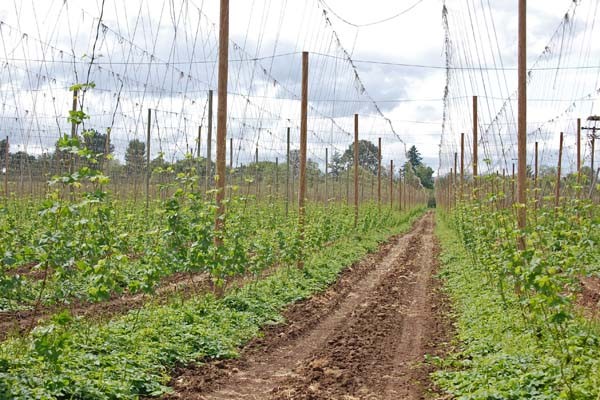
EDITOR’s NOTE: The Craft Brewing Business crew recently visited Rogue Farms outside of Portland in April, during the Craft Brewers Conference. We spent the afternoon exploring the amazing agricultural division of the Rogue brand of craft beer, sodas, spirits and beyond. We’ll be pulling together a big feature on the experience in the coming weeks. Big thanks to Cheryl Gillson, Rogue Farms marketing manager, and Anna Abatzoglou, PR/media marketing manager with Rogue. Both were gracious hosts who know their beer, farming, ingredients, hospitality and vintage video games.
Everyone has their own idea of when spring begins. The calendar says it’s the vernal equinox, when the sun moves into the Northern Hemisphere, also known as the official start of spring. Folklore says it begins with the return of the robin. For others, it’s opening day at the ballpark.
At Rogue Farms (the agriculture business of Rogue Ales & Spirits) we look to our dirt. Our spring begins when the hop bines emerge from the soil in our 42-acre hopyard. At first, they’re so small it’s easy to miss them. Less than an inch tall, we’re always amazed about how they’ll grow another 20 feet in just a few months. The emergence of our bines is one of those small, quiet moments that signifies big changes are coming. The winter rains are tapering off and the days are becoming warmer, sunnier and longer.
Spring at Rogue Farms marks the start of the busy season. Crops need planting. Trellises need stringing. We’re already hard at work.
It takes a trellis
Dozens of bales of coir, weighing hundreds of pounds apiece, arrived at Rogue Farms in February. A hopyard trellis is a massive project. Hundreds of poles planted three feet deep in the ground supporting an array of wires stretching from one end to the other. But by themselves, poles and wires don’t amount to much when it comes to growing hops.
What’s missing is string.
In spring we tie thousands of pieces of string from to the trellis wires and stake the other end into the ground. During the growing season, the bines will climb up the strings towards the sunshine they so desperately crave. But not just any old string will do. We can’t buy it at the hardware store. We use something called coir, a string made from Sri Lankan coconut husks.
Even though it comes from the other side of the world, the fibrous material is easy for bines to grip and climb. For this year’s hop growing season we ordered 63,637 strings. At 21 feet per string, that’s 253 miles of coir. Stringing the trellis, staking the strings into the soil and training the bines to climb are some of the most important chores of spring at Rogue Farms.

Stringing
Riding 20-feet in the air, crews move through the hopyard tying one end of the string to the trellis wires and letting the other end fall to the ground. Everyone works fast and precise. Experienced farm hands can tie two strings at the same time.
Stalking
Another crew comes in behind, pushing the string into the hop mounds and staking them taut. This keeps the strings in place during rain and strong winds all while supporting two to four hop bines, weighing a combined total of 100 pounds. Here’s what our hopyard looks like when we’re done stringing and staking. It takes several days to string and stake all 42 acres of hops. But there’s one more big chore to do.
Training
Hops vines can’t climb strings without our help. When they’re a foot or two tall we train them to climb the strings. We wrap them clockwise around the strings and tie them in place — all by hand. The bines’ natural ability to climb will take over from here.
Slugs 2, Rogue Farms 2
How many slugs does it take to eat 16 acres of rye? We don’t have the answer to that, but here’s what we do know. Our field of Dream Rye after the slug attack. What should be filled with bright green shoots of rye was taken over by brown grass. In January, our field of Dream Rye was healthy and green. A few weeks later, all but four acres were gone, thanks to an unknown number of slugs with voracious appetites.
Do not underestimate the eating power of slugs. One expert calls them, “stomachs with legs.”
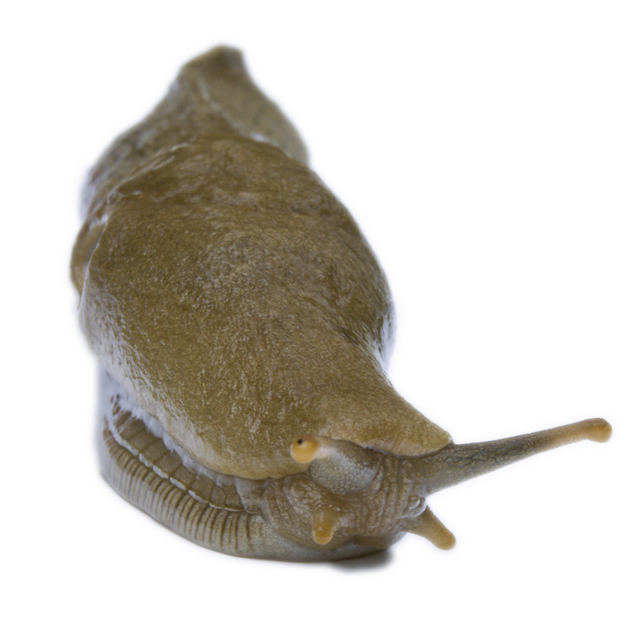
You may remember this is almost exactly what happened to us three years ago when we planted our first ever field of Dream Rye. As the shoots were emerging from the soil, slugs invaded and ate the entire crop in a day. Why did this new attack take so much longer to carry out? No idea. The slugs did not make themselves available for questioning.
When things looked right, we were back in the field plowing, discing and harrowing the soil, and reseeding the lost acres of Dream Rye. We like our odds. Slugs are less active as the weather gets warmer and they’ve never eaten one of our spring crops, only the ones we planted in fall. Like most farmers, we’re optimists. It’s our belief in Dare, Risk, Dream that keeps us planting, replanting and malting our own rye instead of buying it from someone else. It’s also why we’re dedicated to growing a proprietary palate of ingredients of known origin and terroir, even when it’s not the easiest or the cheapest way to do things.
By April, the newly planted rye shoots reemerged and a bright green hue covered the field. As good as it looked, it’s no guarantee of success. If there’s one thing we’ve learned it’s that Mother Nature doesn’t always give you what you want. But when she offers you a second chance, you better go for it.
The Revolution Garden: Growing our gin and soda
This spring we’re undergoing a major expansion of our Revolution Garden at Rogue Farms. We planted an additional 2400 square feet of cucumbers, a key ingredient in our Spruce Gin, Pink Gin and Citrus Cucumber Soda. Throughout spring, we’ll plant more of everything: more coriander, chamomile, angelica, orris root and ginger. We’ll move the juniper bushes up from the river into the garden where the soil is better, and we’ll plant more of those bushes too.
We’re even going to try growing some Grains of Paradise. This spice, a relative of ginger, is native to the swamps of West Africa. We’ll see how it does in the Willamette Valley of Oregon and keep our expectations in check.
If the list of botanicals in our garden reads like the label on our gin, it’s no coincidence. We expanded the garden last year to grow more of the ingredients we use in Rogue Spirits. Revolutions never rest, and the Rogue Farms GYO Revolution is strong and growing.
Our bees are back

After their return in March, we placed our colonies at various locations around Rogue Farms. If the emerging bines don’t convince you, then the other sure sign of spring at Rogue Farms is the return of our 7,140,289 honeybees from their working vacation in California. Our bees spent most of winter pollinating an almond orchard near the town of Tracy. The warmer weather and sunnier days down south reduce stress on the honeybees and help maintain healthy colonies.
Almond pollen and nectar are nutritious sources of food for bees. They’re much better than what we could’ve provided for them had they spent the season with us. Unlike winter, spring at Rogue Farms is an all you can eat buffet for honeybees. Next door, the cherry and apple orchards are in full bloom. You can hear the bees buzzing in the trees. Same with the Big Leaf Maples and tulips over by the Hop ‘N’Bed. The flowers we planted last year are popping up, as are the many other varieties that grow wild around here.
Come summer, the wild blackberries and marionberries will be in full bloom. That’s also when the bees help us grow more beer and spirits by pollinating our Dream Pumpkins and jalapeños. Every day of the season, our honeybees discover a new flavor hidden among the blossoms. Whether it’s a wildflower, a flower we plant for them, one of the blooms in the orchards or a crop we grow, the bees gather all the flavors that surround us. The honey we harvest in late summer is the true taste of the terroir of Rogue Farms.
Getting our hands dirty
When we went looking for a spot to plant this year’s patch of Marionberries, we got down and dirty. We collected soil samples from dozens of locations to find which spot had the best mix of nutrients for Marionberry growing. To those who know the story of Marionberries, this may seem a bit extreme. The variety was developed 50 years ago just across the river from Rogue Farms in Marion County, Oregon. Today, the area around us is the Marionberry capital of the world. You’d think they’d grow just about anywhere on the farm.
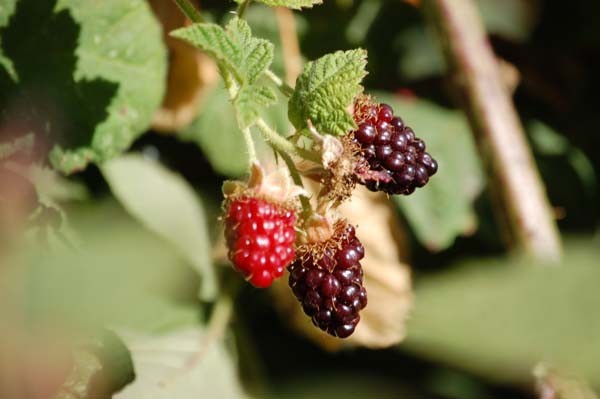
But we wanted to take the time and effort to find the best site we could. We’re planting two acres this spring and, Mother Nature willing, it will produce crops for years to come. Marionberries are the third crop we grow that are pollinated by our honeybees. We’ll pick those berries and mix them with the honey from our bees to brew future batches of Rogue Farms Marionberry Braggot. Try a taste and if you like it, thank our honeybees.
This information was all provided from the fine folks at Rogue Ales & Spirits and the Rogue Department of Agriculture. Big ole thanks to Rogue Farms for letting us reproduce this.

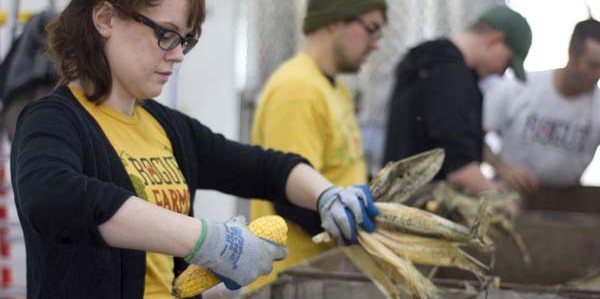
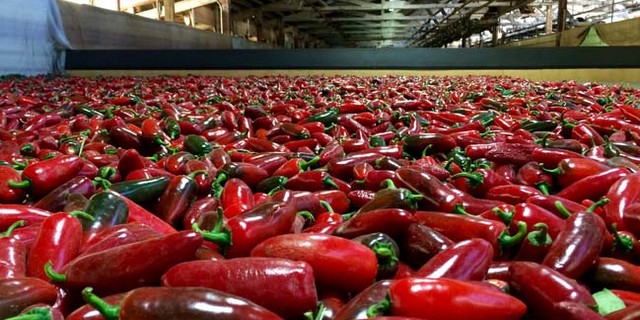
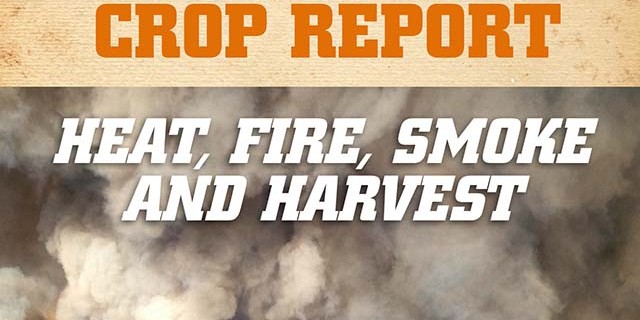
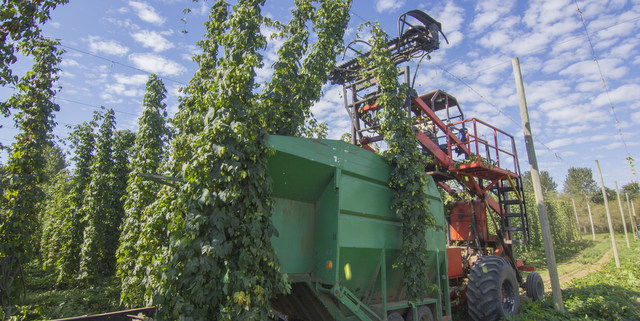
Rogue Farms spring crop report http://t.co/WgWycNFT3e
Rogue Farms spring crop report http://t.co/WUIQJLaiMe via @craftbrewingbiz
RT @RogueAles: Got a visit from @DuchessofBirra a few weeks back. See what she learned about how we #growbeer @RogueFarms: http://t.co/4Uzf…
Got a visit from @DuchessofBirra a few weeks back. See what she learned about how we #growbeer @RogueFarms: http://t.co/4Uzffgjga8
What’s happening @RogueFarms? @CraftBrewingBiz has our spring #cropreport: http://t.co/4Uzffgjga8
Our friends @CraftBrewingBiz talk about their visit to Rogue Farm: http://t.co/bbWuQAH1xV #GYO #DIY
http://t.co/DsGB3c9R45
Check this out if you are interested in learning about growing hops!
@RogueAles #craftbeer #rogue #beerlabels
Krones AG liked this on Facebook.
@CraftBrewingBiz hey guys — thanks for the shout out. We think the link might be broken though.
RT @CraftBrewingBiz: Check out Rogue Farms spring crop report. An awesome Ag business we love @RogueFarms @RogueAles http://t.co/CMkcxogrUT
@CraftBrewingBiz that link 404’s
RT @CraftBrewingBiz: Check out Rogue Farms spring crop report. An awesome Ag business we love @RogueFarms @RogueAles http://t.co/CMkcxogrUT
RT @CraftBrewingBiz: Check out Rogue Farms spring crop report. An awesome Ag business we love @RogueFarms @RogueAles http://t.co/CMkcxogrUT
RT @CraftBrewingBiz: Check out Rogue Farms spring crop report. An awesome Ag business we love @RogueFarms @RogueAles http://t.co/CMkcxogrUT